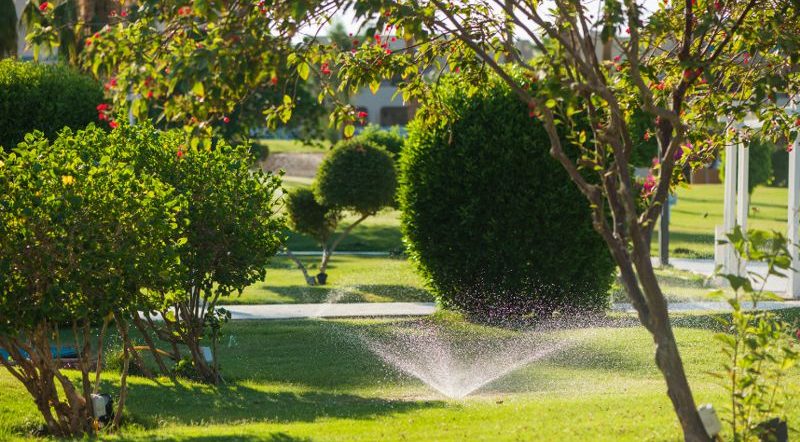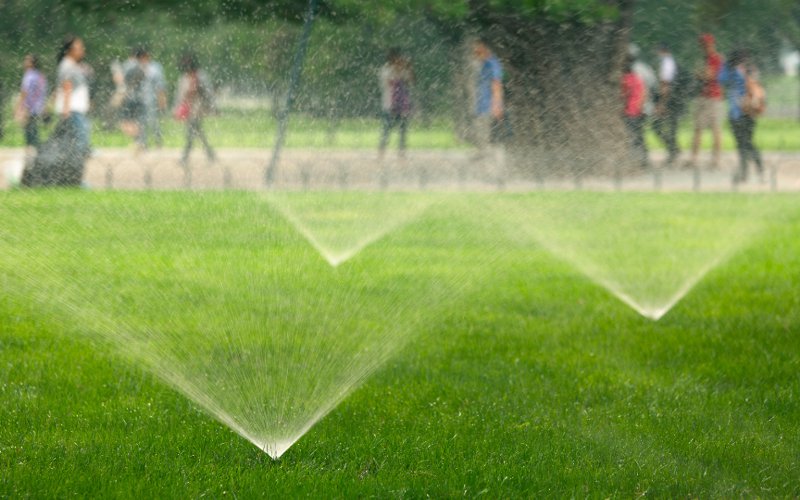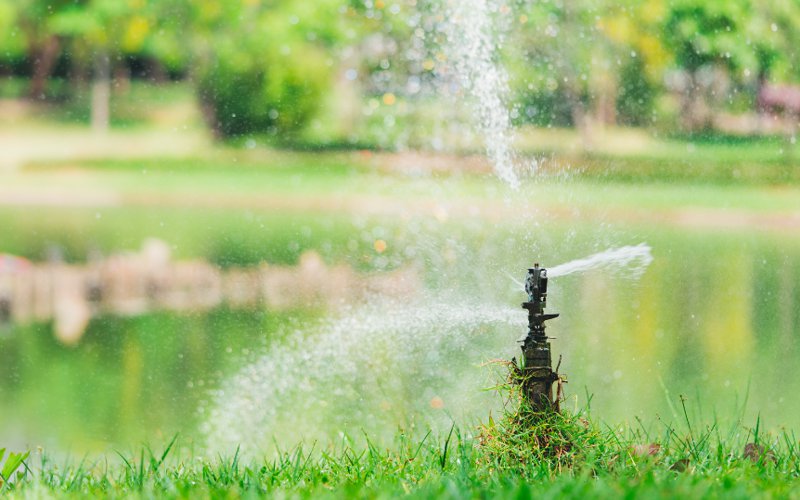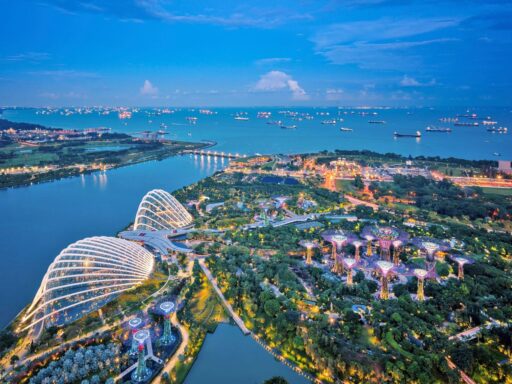Urban park irrigation
Design guidelines

Proper and efficient irrigation management can transform an unattractive urban park into a bright green oasis, increasing the quality of life for city residents. In this era of increasingly limited water resources, it is critical to understand how landscape architecture can contribute to environmental wealth and sustainability.
How can we maximize water use efficiency while keeping our parks thriving and inviting? Below, we will discover the most advanced techniques and strategies to answer this crucial question.
Principles of urban park irrigation design
The fundamentals of irrigation design for urban parks are based on two essential pillars: water use efficiency and plant health. To achieve these objectives, it is essential to consider various factors such as the local climate, the type of soil, the vegetation present and the water needs of the plants. Irrigation design should be aimed at providing water adequately and uniformly, avoiding waste and minimizing the use of water resources.
One of the first considerations when planning the irrigation of an urban park is the analysis of the local climate. It is important to understand the amount of annual precipitation, the seasonal distribution of rainfall and the presence of drought periods. This information will help determine the amount of water needed for park plants and establish an appropriate watering schedule. Furthermore, the design of an irrigation system should take into account the average temperature and relative humidity, which influence the evaporation of water from the soil.
Another key factor to consider is the type of soil in the park. Some types of soil retain water longer, while others can drain quickly. These characteristics will influence the frequency and duration of irrigation necessary to maintain the right level of soil moisture. Furthermore, the design of an irrigation system should provide for a homogeneous distribution of water, avoiding accumulation in certain areas and ensuring uniform irrigation throughout the park.
Types of irrigation systems suitable for urban parks
There are several irrigation systems that can be used for urban parks, depending on the size of the area, the available budget and specific needs. Here are some of the most common systems:
- Irrigation with sprinklers or jets. It is one of the most common methods for watering urban parks, particularly suitable for lawns. It consists of using devices that spray water on a specific area. It is important to correctly position the sprinklers so as to uniformly cover the entire park. Furthermore, it is possible to use devices with adjustable heads to adapt the water flow to the different needs of the vegetation. This system is relatively simple to install and can be easily adapted to the specific needs of the park.
- Drip irrigation. In this case, water is supplied to the plants through tubes or tubes that release drops of water directly to the soil. This system is particularly suitable for shrubby plants or flower beds. Drip irrigation is very efficient in using water, as it reduces evaporative losses and ensures that water reaches the roots of the plants directly.
- Irrigation with micro-sprinklers. It is an ideal solution for urban parks with potted plants or flower beds. This system involves the use of sprinklers that release small quantities of water directly at the base of the plants. This irrigation method is extremely efficient and minimizes water losses.

Guidelines for effective irrigation in urban parks
To ensure effective irrigation in urban parks, it is important to follow a few key guidelines. First of all, it is essential to schedule irrigation based on the actual needs of the plants, avoiding waste of water. This can be done taking into account climatic factors, soil characteristics and the specific needs of the plants present in the park. Furthermore, it is important to avoid watering during the hottest hours of the day, when the water would evaporate rapidly, and prefer the early hours of the morning or the late hours of the afternoon.
Another important key is the use of advanced technologies for irrigation control. Modern irrigation systems can be equipped with sensors that measure soil humidity and automatically adjust water delivery based on the actual needs of the plants. This allows us to avoid excessive or insufficient irrigation and optimize the use of water resources.
Furthermore, it is advisable to divide the park into separate irrigation zones, based on the different needs of the plants and the characteristics of the soil. This will allow you to adapt irrigation specifically to each area and avoid wasting water. It is also important to properly adjust sprinklers to avoid waste and ensure even coverage.
Resources and tools for irrigation design and management
Irrigation of urban parks requires careful planning and management to ensure efficient use of water while maintaining the health and beauty of the landscape. To support the work of designers, various resources and tools are available that help in the design and management of irrigation systems in urban parks.
Among these resources are the software dedicated to the design of irrigation systems for landscaping, gardening, residential areas, lawns and parks. This software allows designers to create efficient and effective irrigation systems. Various parameters such as plant types, soil conditions and water availability can be entered to optimize the irrigation design for the specific needs of the park.
Beyond software, smart irrigation technology has emerged as a valuable tool for urban parks as well. Smart irrigation controllers and sensors use weather or soil moisture data to determine specific needs. Evapotranspiration (ET) controllers adjust irrigation schedules based on local weather data, while controllers with soil moisture sensors determine water needs. Studies have shown that these smart irrigation technologies can reduce water use by 20% with ET controllers and 43% with soil moisture sensor controllers. However, to ensure maximum water savings, regular adjustments and maintenance are essential.

Maintenance of irrigation systems: best practices
Regular maintenance of irrigation systems is essential to ensure the correct functioning and efficiency of the entire system. Some best practices for maintaining irrigation systems include regularly cleaning and inspecting the system, replacing damaged or worn components, and adjusting valves and timers.
It is also important to periodically check your water filtration system to remove any debris or sediment that may be clogging your irrigation system components. Furthermore, it is advisable to regularly check the water pressure to ensure that it is adequate for the correct functioning of the entire system.
Finally, it is crucial to perform preventive maintenance during periods of inactivity, such as in winter or during rainy seasons. During these times, you can carry out a complete overhaul of your irrigation system, repair any damage or faults, and make any necessary upgrades or improvements.
Challenges in implementing an irrigation system in an urban park
Despite the many benefits, implementing irrigation systems in urban parks can present some challenges. One of the main limitations is represented by the availability of water resources. In many cities, water is a limited and precious resource, and irrigating parks can require a significant amount of water. It is therefore important to design irrigation systems that maximize water use efficiency and minimize waste.
Another problem is posed by the continuous maintenance of irrigation systems. In fact, these require regular care to ensure correct functioning and efficiency. Maintenance may require financial and human resources, which may not be readily available in all urban parks.
Conclusions
Irrigation is a fundamental element for the success of an urban park. Proper design and implementation of efficient irrigation systems can help create green and inviting parks, improving the quality of life of residents. However, it is important to carefully consider the specific needs of each park and adapt the irrigation schedule to the soil characteristics, local climate and plant needs. Only through a holistic approach and careful management of water resources can we guarantee the sustainability of urban parks and the well-being of the communities that inhabit them.
Cover photo: Alexeyrumyantsev on Canva































































